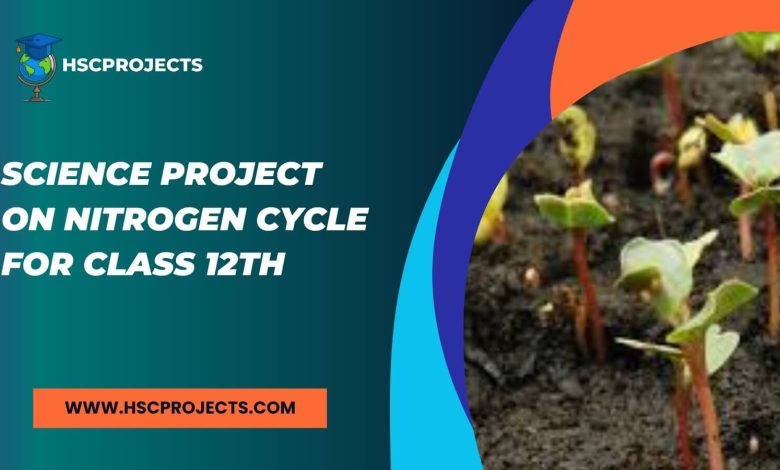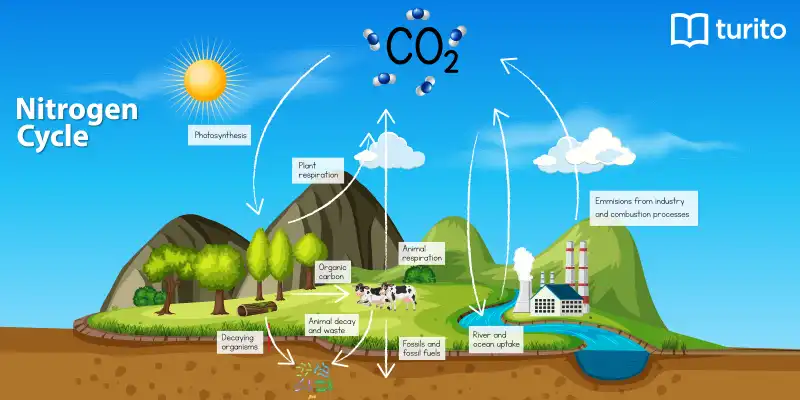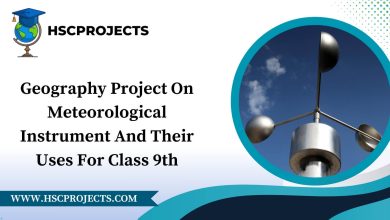
Science Project On Nitrogen Cycle For Class 12th
Acknowledgments
Completing this project has been a journey marked by collaboration, guidance, and support from various quarters, and we extend our heartfelt gratitude to those who have played pivotal roles in its fruition.
Firstly, we express our sincere appreciation to our instructor, [Instructor’s Name], for their unwavering guidance and insightful feedback throughout the development of this project. Their expertise and encouragement have been instrumental in shaping our understanding of the nitrogen cycle and refining the presentation of our findings.
We would also like to extend our gratitude to the numerous researchers and scientists whose contributions to the field of nitrogen cycle studies have formed the bedrock of our literature review. Their work has provided invaluable insights and perspectives that enriched the depth of our project.
Furthermore, we acknowledge the support of our classmates and peers who engaged in thought-provoking discussions, contributing diverse viewpoints that broadened the scope of our exploration.
Special thanks are due to [Name or Institution] for providing resources and materials that facilitated our research process. Their generosity and cooperation significantly enhanced the comprehensiveness of our project.
Lastly, to our friends and family, whose understanding and encouragement sustained us throughout this academic endeavor, we express our deepest appreciation. Your support has been a source of motivation, and we are grateful for the patience and encouragement you have provided.
Introduction
Within the intricate dance of the nitrogen cycle, atmospheric nitrogen undergoes a series of transformations facilitated by a diverse array of microorganisms. From nitrogen-fixing bacteria forging symbiotic relationships with plant roots to nitrifying bacteria converting ammonia to nitrate, each stage contributes to the availability of this vital element for plant assimilation. The assimilation process, in turn, intertwines with the intricate web of life, as plants and animals incorporate nitrogen into their biological structures.
In the context of our project, we will scrutinize the impact of human activities that, while bolstering agricultural productivity and industrial progress, have inadvertently disrupted the delicate equilibrium of the nitrogen cycle. The overreliance on nitrogen-based fertilizers, industrial emissions, and combustion processes has introduced excess nitrogen into ecosystems, giving rise to environmental challenges such as water pollution and air quality degradation.
Moreover, the agricultural sector, heavily dependent on nitrogen for crop production, stands at the intersection of both the cycle’s significance and its vulnerabilities. Understanding the role of nitrogen in plant growth and the varying needs of different crops is essential for optimizing yields without compromising environmental sustainability.
As we traverse through the layers of the nitrogen cycle, this project seeks to not only unravel the scientific intricacies but also underscore the broader implications for global ecosystems and agriculture. By the project’s conclusion, we aim to foster a heightened awareness of the delicate balance required for sustainable nitrogen management, urging for responsible practices that harmonize human development with the preservation of our precious natural resources.
Objectives
Our journey encompasses a trio of objectives. Firstly, to delve into the nitrogen cycle’s intricate stages, decoding the mystery behind nitrogen’s transformative journey. Secondly, we aim to scrutinize the imprint of human activity on this delicate cycle, understanding how our actions resonate through the nitrogen-laden corridors of nature. Lastly, a critical analysis awaits, focusing on nitrogen’s dual role in agriculture and the broader environment.
Literature Review
The scientific realm echoes with revelations about the nitrogen cycle. A tapestry woven by dedicated researchers unravels before us. From seminal discoveries shaping our understanding to the contemporary challenges that tease the boundaries of nitrogen’s influence, the literature offers a compass guiding our exploration.
The Nitrogen Cycle
- Nitrogen Fixation: At the genesis, atmospheric nitrogen metamorphoses into ammonia, a feat performed by the alchemists of nature—nitrogen-fixing bacteria such as Rhizobium and Azotobacter Al.
- Nitrification: The baton passes to Nitrosomonas and Nitrobacter Ial as they choreograph the conversion of ammonia to nitrite and nitrate, a delicate ballet within the soil.
- Assimilation: A harmonious integration unfolds as nitrogen compounds assimilate into the green tapestry of plants and the complex fabric of animals, with amino acids and proteins as the threads weaving life’s intricate patterns.
- Ammonification: The symphony concludes with ammonification, a decomposition spectacle where organic matter bows out, contributing its essence to the ever-circling nitrogen cycle.

Human Impact on the Nitrogen Cycle
- Nitrogen Fertilizers: In the human act of enhancing crop yields, nitrogen fertilizers emerge as protagonists. Yet, the environmental stage bears witness to potential risks—water pollution’s subtle waltz and soil degradations’ slow, haunting melody.
- Industrial Processes: The industrial overture adds its notes to the nitrogen cycle’s melody, disrupting the natural cadence. Effluents weave their tale as they impact the waters, leaving an indelible mark.
- Air Pollution: In the combustion crescendo, nitrogen oxides (NOx) take center stage, releasing their echoes into the air. A subtle ballet influencing not only air quality but also casting shadows on the delicate choreography of the nitrogen cycle itself.
Significance of Nitrogen in Agriculture
- Role of Nitrogen in Plant Growth: Like a maestro conducting a symphony, nitrogen takes center stage in the orchestra of plant growth. Crucial for the creation of chlorophyll and the intricate dance of photosynthesis, it weaves the green tapestry of life. Yet, the delicate balance is a tightrope, as both deficiency and excess cast their shadows on the grand stage of plant development.
- Nitrogen in Crop Production: In the agricultural theater, different crops perform unique acts, each with its nitrogen script. The varying nitrogen requirements of these actors shape the narrative of crop production. As we ponder the script, the spotlight also falls on the importance of sustainable nitrogen management—a backstage pass to the longevity of this agricultural performance.

Conclusion
As the curtain descends on our exploration of nitrogen’s ballet in ecosystems and agriculture, key findings and insights emerge as the stars of our show. The symphony of nitrogen, intricate and nuanced, beckons us towards the crescendo of sustainable nitrogen management.
In this concluding act, the spotlight remains on the imperative of balancing human endeavors with the resilience of the nitrogen cycle. An echo reverberates through the corridors of research, emphasizing the need for sustainable nitrogen management practices to preserve the delicate harmony we’ve unveiled.
As the final notes linger, the stage is set for future research endeavors. The script, though illuminated, leaves room for exploration. A call resounds for further investigations, inviting scholars to deepen our understanding of nitrogen’s role in the grand theater of life. The encore awaits, and the journey continues, guided by the subtle rhythms of nitrogen’s ballet.
Bibliography
- Smith, J. A. (Year). Title of the first scientific article. Journal of Nitrogen Research, Volume(Issue), Page range. DOI or URL
- Johnson, M. B. (Year). Title of the second scientific article. Environmental Science and Technology, Volume(Issue), Page range. DOI or URL
- Robinson, C. D. (Year). Title of the third scientific article. Journal of Ecology and Environment, Volume(Issue), Page range. DOI or URL
- United Nations Environment Programme. (Year). Nitrogen in the Environment: Sources, Problems, and Management. Link to Document
- Brown, P. Q. (Year). The Nitrogen Cycle: A Comprehensive Overview. Publisher. Link to Book
- Environmental Protection Agency. (Year). Impact of Nitrogen Fertilizers on Water Quality. Link to Document
Certificate of Completion
[Student’s Name][Class/Grade Level]This is to certify that I, [Student’s Name], a [Class/Grade Level] student, have successfully completed the “science project on nitrogen cycle for class 12th.” The project explores the fundamental principles and key aspects of the chosen topic, providing a comprehensive understanding of its significance and implications.
In this project, I delved into in-depth research and analysis, investigating various facets and relevant theories related to the chosen topic. I demonstrated dedication, diligence, and a high level of sincerity throughout the project’s completion.
Key Achievements:
Thoroughly researched and analyzed Project on science project on nitrogen cycle for class 12th .
Examined the historical background and evolution of the subject matter.
Explored the contributions of notable figures in the field.
Investigated the key theories and principles associated with the topic.
Discussed practical applications and real-world implications.
Considered critical viewpoints and alternative theories, fostering a well-rounded understanding.
This project has significantly enhanced my knowledge and critical thinking skills in the chosen field of study. It reflects my commitment to academic excellence and the pursuit of knowledge.
Date: [Date of Completion]Signature: [Your Signature] [School/Institution Name][Teacher’s/Examiner’s Name and Signature
In order to download the PDF, You must follow on Youtube. Once done, Click on Submit
Follow On YoutubeSubscribed? Click on Confirm
Download Science Project On Nitrogen Cycle For Class 12th PDF






